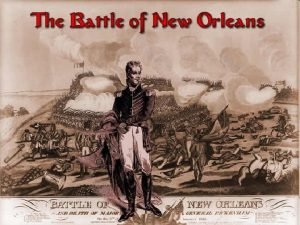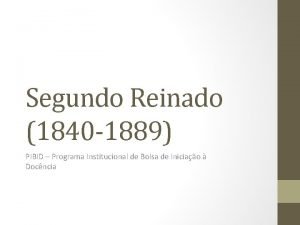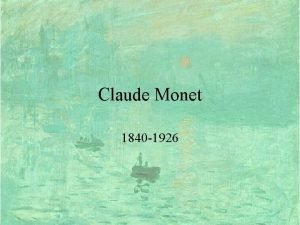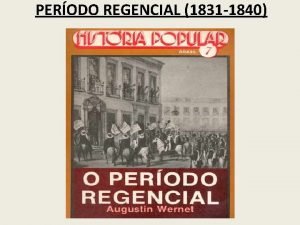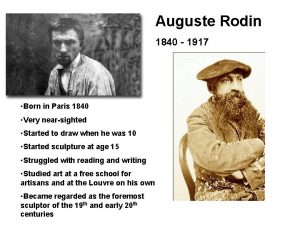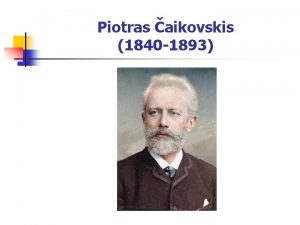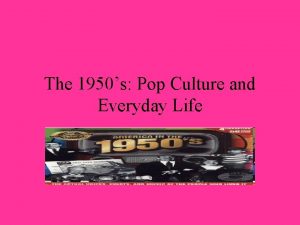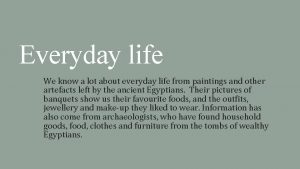Chapter 11 Technology Culture and Everyday Life 1840











- Slides: 11

Chapter 11 Technology, Culture, and Everyday Life, 1840 -1860

Focus Question What technological improvements increased industrial productivity between 1840 and 1860?

Section One: Technology and Economic Growth 1. John Deere-invents the steel tipped plow in 1837. 2. Cyrus Mc. Cormick-invents the Mc. Cormick reaper, helps the North win the Civil War. 3. “American System of Manufacturing”- adopted by European countries after Eli Whitney’s interchangeable parts model.

Section One: Technology and Economic Growth 4. Samuel Morse transmits first telegraph message in 1844 5. Railroad boom- fairly dangerous at first, by 1860 most goods being transported via railroad. America’s first “big business”. 6. With the introduction of steam power, the average Americans income increases 25%. Cities

Section Two: Quality of Life 1. Coal burning stoves- increase the heating of a home as well as diverse diets. 2. Urban waterworks projects bring running water to major cities, like NY. 3. Cities are still filthy, hogs still used for sanitation.

Section Two: Quality of Life 4. Epidemics spread- yellow fever wipes out 1/5 of New Orleans in 1833, average life expectancy in New York and Philadelphia was 24 years. 5. William Morton successfully uses anesthesia for surgery in 1842. 6. Phrenology-the study of the size of the human brain. The size and shape of peoples skulls showed a persons capacity.

Section Three-Domestic Pastimes 1. Newspapers- the penny press becomes popular, that is large papers for mass circulation to turn a profit. 2. Minstrel shows- the use of blackface. Reinforces prejudice and black stereotypes. 3. P. T. Barnum-creates Americas first circus, “the greatest show on earth”.

Section Four: The Quest for Nationality in Literature and Art 1. James Fenimore Cooper – Created the American fiction character, frontiersman Natty Bumppo in The Pioneers(1823) 2. Ralph Waldo Emerson – Leader of the transcendentalist movement (the American offshoot of romanticism). His most famous work was “The American Scholar” (1837) where he called for a unique American style.

Section Four: The Quest for Nationality in Literature and Art 3. Henry David Thoreau – Represented younger Emersonians, being much of a “doer”, going to jail rather than paying a poll tax. A famous work of his was “Civil Disobedience” (1849) in which he defended a citizen’s right to disobey unjust laws. He also spent two years away from society at Walden Pond where he wrote his most famous book Walden in which he said that material wants could be satisfied with a few weeks of work a year, and thereby leave more time for reexamining life’s purpose.

Section Four: The Quest for Nationality in Literature and Art 4. Margaret Fuller – Wrote Woman in the Nineteenth Century (1845), breaking with the prevailing notion of separate spheres for men and women. 5. Nathaniel Hawthorne – The Scarlet Letter (1850) 6. Edgar Allen Poe – “The Cask of Amontillado” (1846) 7. Herman Melville – Moby Dick (1851)

Section Four: The Quest for Nationality in Literature and Art 8. These last three writers probed the depths of the human mind rather than the intricacies of social relationships, evolving into an underlying pessimism about human character. • Paperback books were sold in bulk for the first time for entertainment in the 1840’s for as little as seven cents. • The Hudson River School (1820’s-1870’s) was best represents by Thomas Cole, Asher Durand, and Frederick Church, who painted scenes of the region around the Hudson River.
 Importance of information technology in daily life
Importance of information technology in daily life Chapter 6 section 2 supply and demand in everyday life
Chapter 6 section 2 supply and demand in everyday life 1815 took a little trip
1815 took a little trip Voto censitário
Voto censitário Currie v misa
Currie v misa Stenotermal
Stenotermal Segundo reinado 1840 a 1889
Segundo reinado 1840 a 1889 Fue descubierto y nombrado por schoenbein en 1840
Fue descubierto y nombrado por schoenbein en 1840 Snídaně v trávě monet
Snídaně v trávě monet Material culture and nonmaterial culture
Material culture and nonmaterial culture Continuous culture and batch culture
Continuous culture and batch culture Difference between american and indian culture
Difference between american and indian culture


